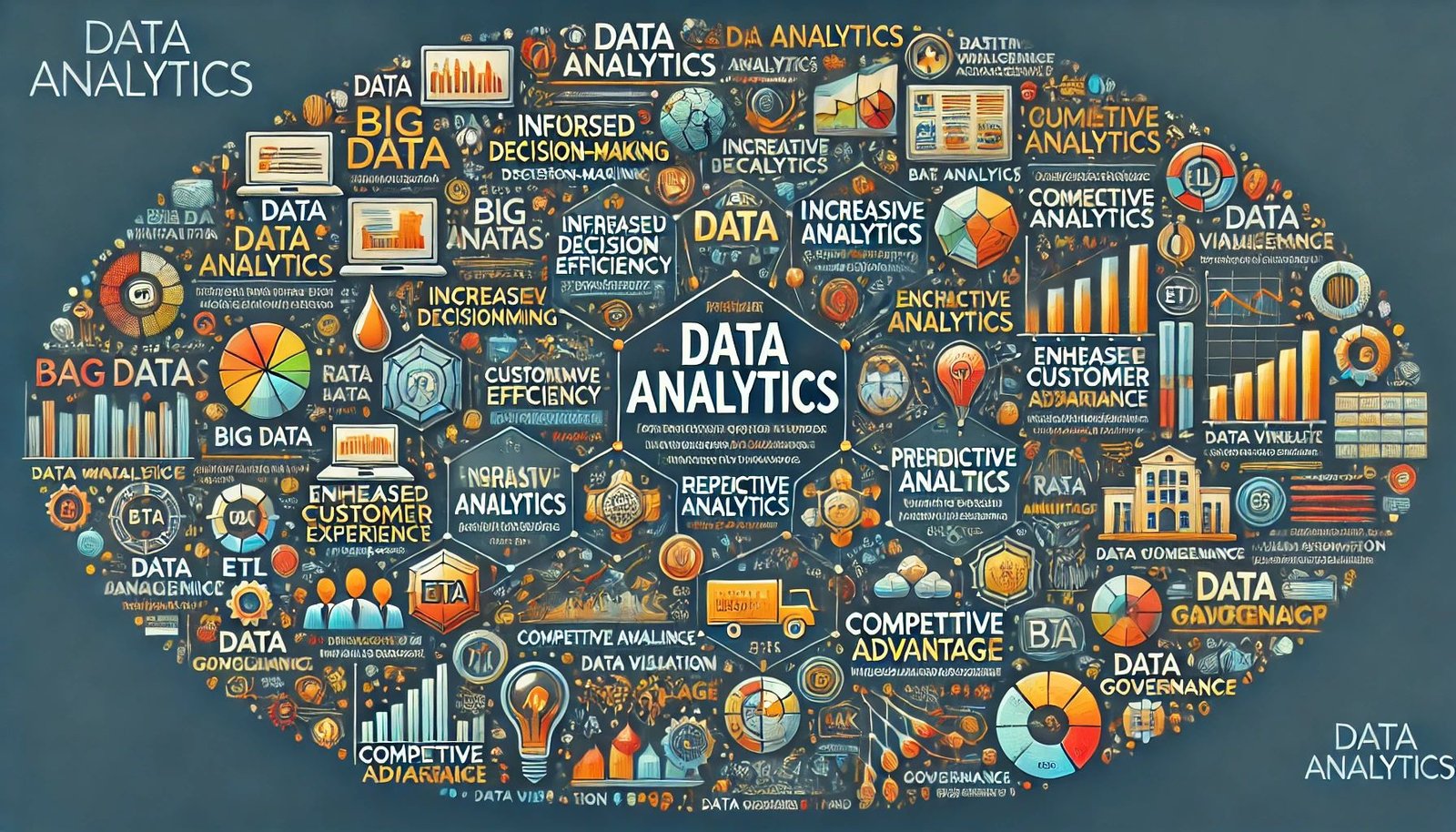
Overview of Data Analytics: Content of Data Sets
Definition and Importance
Data Analytics is the process of examining data sets to draw conclusions about the information they contain, aided by specialized systems and software.
This practice helps organizations make informed business decisions and is vital in the modern data-driven world.
Data analytics encompasses various techniques and tools, including statistics, computer programming, and operations research, to extract meaningful insights from data.
Importance of Data Analytics:
Informed Decision-Making:
Data analytics enables organizations to make data-driven decisions by providing insights derived from data analysis, reducing the reliance on intuition or guesswork.
Increased Efficiency:
By analyzing data, companies can identify inefficiencies and optimize processes, leading to cost savings and improved productivity.
Enhanced Customer Experience:
Data analytics helps in understanding customer behavior and preferences, enabling businesses to tailor their offerings and improve customer satisfaction.
Competitive Advantage:
Organizations leveraging data analytics can gain a competitive edge by identifying market trends, predicting future outcomes, and staying ahead of their competitors.
Risk Management:
Data analytics aids in identifying potential risks and fraud, allowing organizations to take proactive measures to mitigate these risks.
Key Concepts and Terminology
- Data: Raw, unprocessed facts and figures collected from various sources. Data can be structured (organized in rows and columns) or unstructured (such as text, images, and videos).
- Big Data: Large and complex data sets that cannot be managed or analyzed using traditional data processing tools. Big data is characterized by the three Vs: Volume, Velocity, and Variety.
- Data Mining: The process of discovering patterns and relationships in large data sets using machine learning, statistics, and database systems. It involves techniques such as clustering, classification, and association rule learning.
- Descriptive Analytics: This type of analytics focuses on summarizing historical data to understand what has happened in the past. Common techniques include data aggregation and data visualization.
- Predictive Analytics: This branch uses statistical models and machine learning techniques to forecast future outcomes based on historical data. Predictive analytics is often used for risk assessment, customer segmentation, and demand forecasting.
- Prescriptive Analytics: Goes beyond predicting future outcomes by recommending actions to achieve desired results. It involves optimization and simulation algorithms to provide actionable insights.
- Data Warehousing: The process of collecting, storing, and managing large volumes of data from different sources in a centralized repository. Data warehouses support business intelligence activities and enable efficient querying and analysis.
- ETL (Extract, Transform, Load): A process used to integrate data from various sources into a data warehouse. It involves extracting data from different systems, transforming it into a consistent format, and loading it into the target database.
- Business Intelligence (BI): The technology-driven process of analyzing data and presenting actionable information to help executives, managers, and other corporate end users make informed business decisions. BI tools include dashboards, reports, and data visualization.
- Machine Learning: A subset of artificial intelligence that involves training algorithms to learn patterns from data and make predictions or decisions without being explicitly programmed.
- Data Visualization: The graphical representation of data to help stakeholders understand complex data sets and identify trends, patterns, and outliers. Common visualization tools include charts, graphs, and maps.
- Data Governance: The overall management of data availability, usability, integrity, and security in an organization. It involves establishing policies, procedures, and standards to ensure data quality and compliance with regulations.
By understanding these key concepts and terminology, organizations can better navigate the complex landscape of data analytics and leverage it to drive growth, innovation, and efficiency.
Data analytics is not just about collecting data but about extracting meaningful insights to inform strategic decisions and improve overall business performance.


